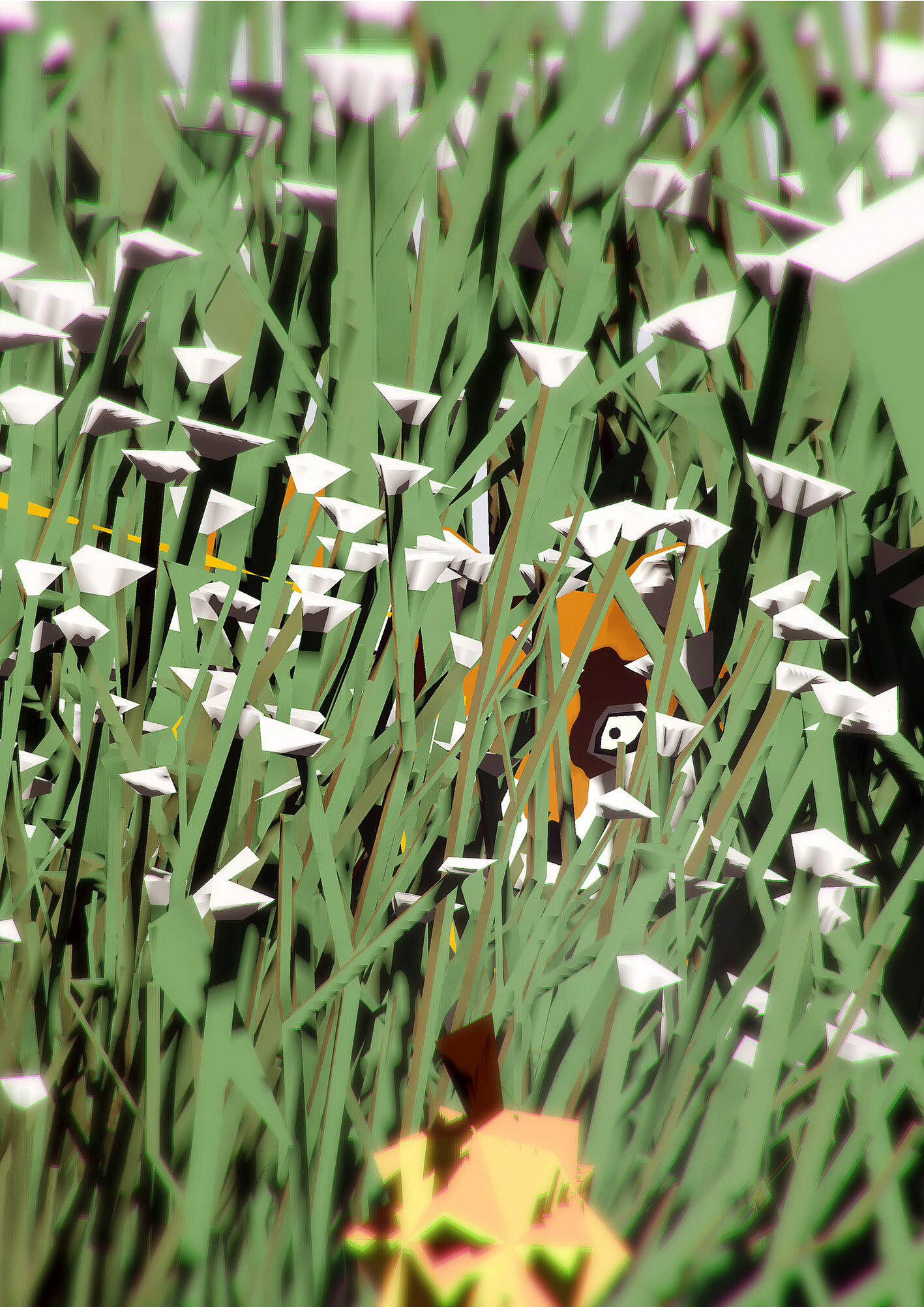We are pleased to announce our 2016 program of exhibitions. The year begins with the artist Ian Cheng’s first solo show in Switzerland and a presentation of works from our collection titled Momentary Monuments. From June until September, we will host the biennial Manifesta 11 in our galleries. Then, in the fall, we kick off an extensive program of events celebrating the Migros Museum für Gegenwartskunst’s 20th anniversary.
Ian Cheng
February 20–May 16, 2016
The work of Ian Cheng explores the nature of mutation and the capacity of humans to relate to change. Drawing on principles of video game design, improvisation, and Darwinian brutality, Cheng has developed so-called “live simulations”—living virtual ecosystems that begin with basic programmed properties, but are left to self-evolve without authorial control or end. His simulations often model the dynamics of imaginative organisms and ecologies, but do so with the unforgiving causality found in nature itself. What results is a cascade of emergent behaviors that the artist can manage but never truly master. Cheng, who studied cognitive science at the University of California, Berkeley, describes his simulations as akin to a “neurological gym”: a format for viewers to deliberately exercise the feelings of confusion, anxiety, and cognitive dissonance that accompany the experience of unrelenting change. In his first solo exhibition in Switzerland, Cheng will present a new piece.
Ian Cheng (b. 1984, Los Angeles) lives and works in New York. In the past few years, his art has been on view in exhibitions at Pilar Corrias, London (2015), the Fondazione Sandretto Re Rebaudengo, Turin (2015), Kunsthalle Düsseldorf (2015), and Standard, Oslo (2013).
The exhibition is curated by Raphael Gygax (Curator, Migros Museum für Gegenwartskunst).
Collection on Display: Momentary Monuments
February 20–May 16, 2016
Christine Borland, Marc Camille Chaimowicz, Dani Gal, Christian Jankowski, Fabrice Gygi, Mathilde ter Heijne, Ragnar Kjartansson, Teresa Margolles, Olivier Mosset, Henrik Olesen, Cady Noland, Thomas Schütte
The exhibition series Collection on Display showcases selected works from the collection of the Migros Museum für Gegenwartskunst.
The latest installment of Collection on Display will present works examining the significance and function of monuments for a larger exploration of memory and forgetting. In the perspective of art history, the evolution of sculpture is closely intertwined with that of monument culture: effigies of rulers, equestrian statues, and monuments always reflect the tastes, worldviews, and designs of the powerful patrons who commissioned them—and yet, they also illustrate contemporary developments in the discourse of art. Monuments served—and still serve—to propagate the prevailing ideas of their time and visualize the interpretation of events and personalities the ruling élites hope to enshrine in history books and collective memory. In contemporary art, the idea of the monument has become a focal point for artists’ engagement with the question of who determines how history is written and the representation of power in the public arena.
Collection on Display is curated by Nadia Schneider Willen (Collection Curator, Migros Museum für Gegenwartskunst).
Migros Museum für Gegenwartskunst: 20 Years
October 2016–February 2017
The Migros Museum für Gegenwartskunst celebrates its 20th anniversary! The occasion presents an excellent opportunity to take a look back at where we came from—but the Migros would not be the museum it is if we settled for a conventional and purely historical retrospective at the work we have done over the past 20 years. Rein Wolfs, who founded the museum in 1996, and Heike Munder, who succeeded him as director in 2001, have always championed the idea of the museum as a dynamic site, a venue for critical discussion and renegotiation of entrenched categories of art as well as the role of art institutions. So instead of presenting a traditional review of our accomplishments, we want to use the anniversary to stimulate an open and lively engagement with the museum’s history and collection, as well as its guiding curatorial ideas and intellectual program. The exhibition will be divided into sections that examine various emphases of the Migros Museum für Gegenwartskunst’s institutional praxis. One central element of the anniversary project is a presentation of highlights from the collections in multiple stages. To signal the importance we attach to our art education program, we will incorporate it in the exhibition space. An archive room will highlight interesting aspects of the museum’s history. In cooperation with the Institute of Art History at the University of Bern and the Academy of Visual Arts Leipzig, we will also outline a theoretical framework to stimulate critical reflection on larger issues: an anthology published on occasion of the anniversary will examine problems of the institutional locus of art and the conditions of artmaking in order to launch a critical examination of the function and role of museums today, continuing a discourse that has been crucial to the Migros Museum für Gegenwartskunst’s identity from the start.
The exhibition is curated by Heike Munder (Director, Migros Museum für Gegenwartskunst), Raphael Gygax (Curator, Migros Museum für Gegenwartskunst), and Nadia Schneider Willen (Collection Curator, Migros Museum für Gegenwartskunst).


